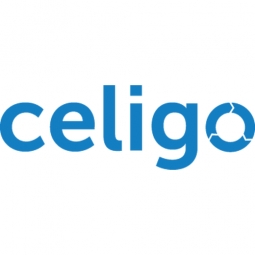Download PDF
HighJump's Customized Integrations for Enhanced Data Management and Campaign Tracking
Technology Category
- Application Infrastructure & Middleware - Data Exchange & Integration
- Application Infrastructure & Middleware - Middleware, SDKs & Libraries
Applicable Industries
- Equipment & Machinery
Applicable Functions
- Logistics & Transportation
Use Cases
- Mass Customization
- Supply Chain Visibility
Services
- System Integration
The Challenge
HighJump, a global software company specializing in supply chain management solutions, was facing challenges in managing and synchronizing data between their NetSuite CRM and Hubspot applications. They collected contact information from various sources like web forms and email campaigns, which flowed into these applications depending on where they were collected. Campaigns were created in Hubspot, but responses were mapped in NetSuite. This necessitated a two-way integration between NetSuite CRM and HubSpot to unify contact information and campaign updates. Initially, the data syncing was done manually, which was time-consuming and inefficient. An attempt to automate the process using an integration tool from a smaller vendor proved unsatisfactory due to inadequate support and lack of control over the integrations.
About The Customer
HighJump is a global software company that specializes in providing supply chain management solutions. Their services cater to 3PL, warehouse, and logistics ecosystems. With over 10,000 customers worldwide, including many at the enterprise level, HighJump is a leader in the supply chain management software market. Their innovative products have helped them carve a niche in the industry. HighJump uses NetSuite CRM and Hubspot to track their contacts and leads, as well as manage their campaigns. They are headquartered in Johnstown, Colorado, USA.
The Solution
To address these challenges, HighJump chose Celigo for its acclaimed support team and its emphasis on user ownership of integrations. HighJump's team built the Hubspot-NetSuite CRM integration themselves, with the support of Celigo’s technical team. They found that integrations built on Integrator.io could be adjusted to their needs. Initially, the data flows threw a lot of exceptions, which were actually data quirks between Hubspot and NetSuite, such as duplicate records. To improve user experience, these quirks were categorized into different buckets. With Celigo’s technical support, HighJump's team was able to redesign the flows to fit these needs, resulting in a 90% reduction in errors. HighJump is now working on expanding their use of Integrator.io to integrate Salesforce with the rest of their systems.
Operational Impact
Quantitative Benefit
Related Case Studies.

Case Study
Smart Water Filtration Systems
Before working with Ayla Networks, Ozner was already using cloud connectivity to identify and solve water-filtration system malfunctions as well as to monitor filter cartridges for replacements.But, in June 2015, Ozner executives talked with Ayla about how the company might further improve its water systems with IoT technology. They liked what they heard from Ayla, but the executives needed to be sure that Ayla’s Agile IoT Platform provided the security and reliability Ozner required.

Case Study
IoT enabled Fleet Management with MindSphere
In view of growing competition, Gämmerler had a strong need to remain competitive via process optimization, reliability and gentle handling of printed products, even at highest press speeds. In addition, a digitalization initiative also included developing a key differentiation via data-driven services offers.

Case Study
Predictive Maintenance for Industrial Chillers
For global leaders in the industrial chiller manufacturing, reliability of the entire production process is of the utmost importance. Chillers are refrigeration systems that produce ice water to provide cooling for a process or industrial application. One of those leaders sought a way to respond to asset performance issues, even before they occur. The intelligence to guarantee maximum reliability of cooling devices is embedded (pre-alarming). A pre-alarming phase means that the cooling device still works, but symptoms may appear, telling manufacturers that a failure is likely to occur in the near future. Chillers who are not internet connected at that moment, provide little insight in this pre-alarming phase.

Case Study
Premium Appliance Producer Innovates with Internet of Everything
Sub-Zero faced the largest product launch in the company’s history:It wanted to launch 60 new products as scheduled while simultaneously opening a new “greenfield” production facility, yet still adhering to stringent quality requirements and manage issues from new supply-chain partners. A the same time, it wanted to increase staff productivity time and collaboration while reducing travel and costs.

Case Study
Integration of PLC with IoT for Bosch Rexroth
The application arises from the need to monitor and anticipate the problems of one or more machines managed by a PLC. These problems, often resulting from the accumulation over time of small discrepancies, require, when they occur, ex post technical operations maintenance.

Case Study
Robot Saves Money and Time for US Custom Molding Company
Injection Technology (Itech) is a custom molder for a variety of clients that require precision plastic parts for such products as electric meter covers, dental appliance cases and spools. With 95 employees operating 23 molding machines in a 30,000 square foot plant, Itech wanted to reduce man hours and increase efficiency.





